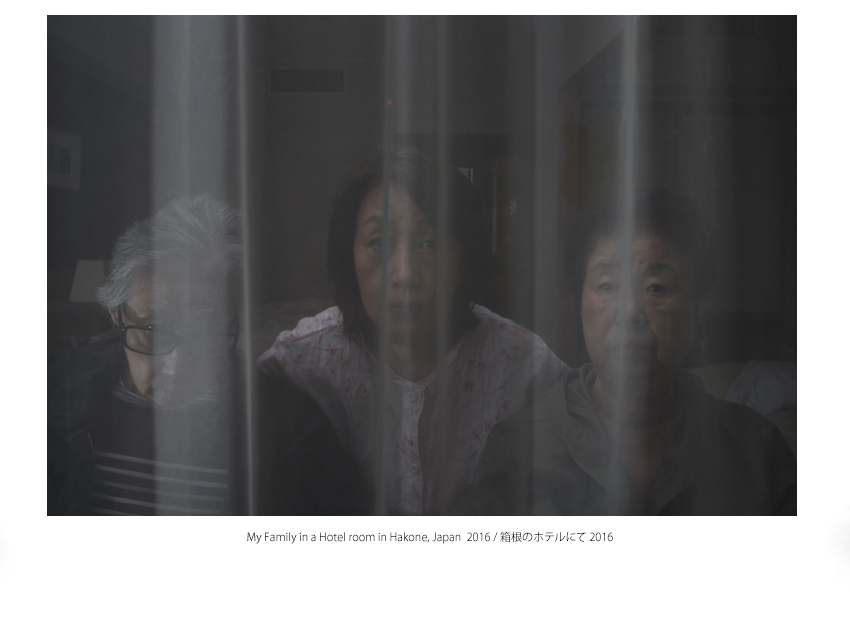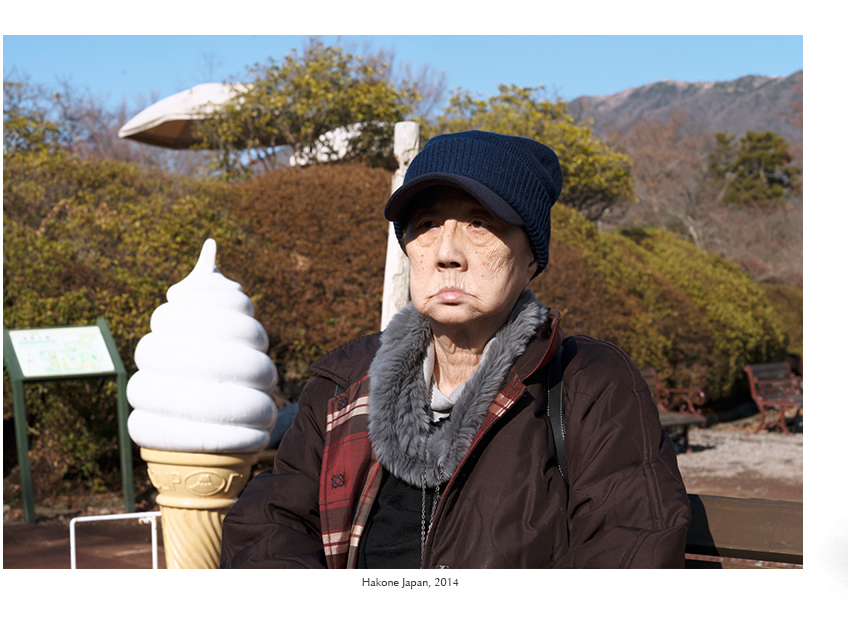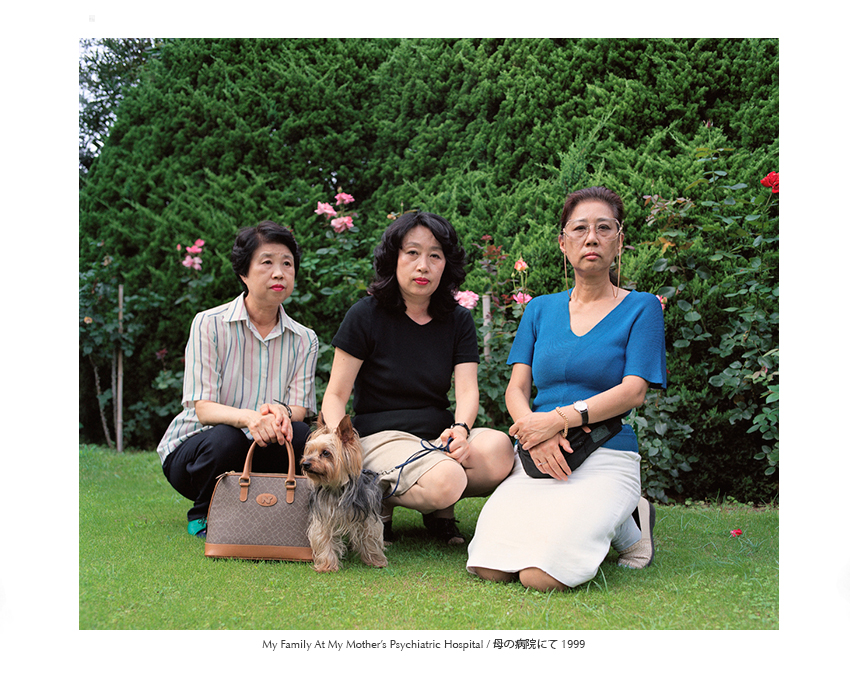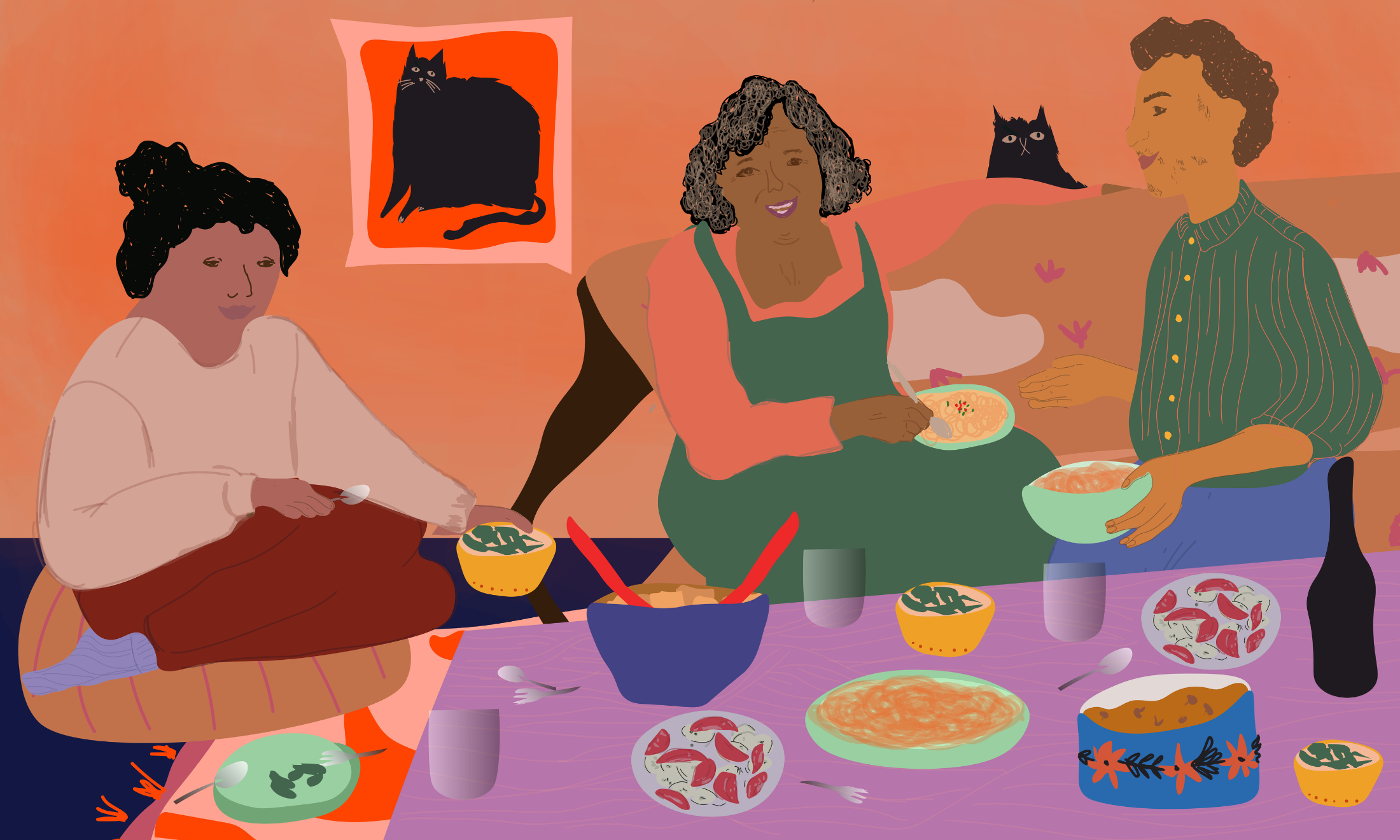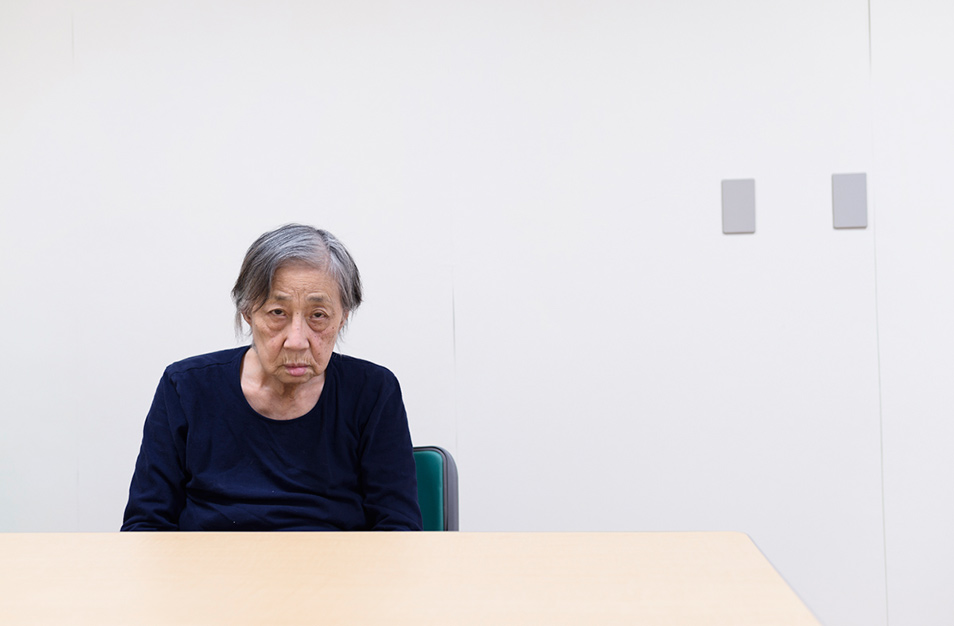
This photography series documents the realities of mental illness in the family
Siima Itabaaza
05 Mar 2018
Three women sit by the sea, in fog, wearing black. They are all over the age of 50: strands of white hair and faint wrinkles show their age. One woman looks into the camera; the other two look to the side. The women in this photograph, My Family in Nikko, 2000, are artist Takahiro Kaneyama’s mother and aunts.
This and other haunting photographs are part of his latest series, While Leaves Are Falling – a subtle, poignant display of the brevity of life – shown at the Miyako Yoshinaga gallery during the summer of 2017, and beautifully published in book form by Akaaka. When we sit down to talk, Kaneyama explains how the photographs, which are mostly of his family travelling around Japan, were all taken in the transformative years after the passing of his grandmother and his mother’s diagnosis with schizophrenia.
“It is as though they have been preserved in the very act of disappearing”
There are intensely personal stories behind all of these images. Combinations of some reflect changes in Kaneyama’s mother and remind us of the physical effects of mental illnesses, typically characterised by their invisibility. In My Mother, 1971, for example, she appears vivacious and cheerful while in My Mother in a Hotel Room in Hakone, 2016, she seems less present and gloomy. Kaneyama speaks openly of both his mother’s illness and his grandmother’s death which showed him, for the first time, how transient life truly is: “we all age,” he says, ponderously. “But I never really thought that my family would grow older… [but] they definitely have become more old.”
In While Leaves Are Falling, Kaneyama preserves his family’s image and memory in various ways – documenting everyday activities, moods, and ailments. Yet, the women are also often captured in situations during which they seem to fade into their surroundings. They disappear in fog or into the features of the rooms they occupy, such as in My Family in a Hotel Room in Hakone, 2016, in which we struggle to work out their faces behind a net curtain. It is as though they have been preserved in the very act of disappearing.
Travel is itself an act of preservation in these images. After Kaneyama’s grandmother’s death, the family began taking their trips around Japan. “By travelling together, me taking pictures of them, [we bring] up memories that we never had,” Kaneyama says. The trips somehow excavate the women’s youthfulness – they take walks and get dressed together, as we imagine they might have done when young. In many images, however, what on the surface seems to explore youth, often reveals something deeper. “We went to a museum in Hakone,” Kaneyama explains, describing the context of My Family in Hakone, 2009 in which the women are surrounded by bubbles. “And they started fighting when we left. These bubbles started coming up, by the entrance. Then […] I photographed them.” The women’s tense expressions and their stiff postures remind us of the toll that illness can have, not just on patients, but also on those that are close to them. While the setting of this photograph evokes youthfulness, the image is more about the far-reaching impact of illness. Here, Kaneyama extends the act of preservation to moments that we would rather forget.
We witness Kaneyama’s mother’s illness and its effects on the family in various forms. In My Family at My Mother’s Hospital, 1999, the women look calm in the lush compound outside his mother’s hospital; My Mother’s Feet, 2005, shows a greyish reflection of Kaneyama’s mother’s legs and feet in a mirror as she lays motionless in bed (perhaps this photograph is a metaphor for the restrictions, both physical and mental, that her condition has created); and in My Mother in Pain, 2015, we see Kaneyama’s mother laying in bed with her eyes and mouth open, as though she is howling, trying to expunge herself of her distress.
“Right after she takes her medication she starts suffering. She hears voices and in this case, I think she started saying, “I just got shot, there’s a gun!”” Kaneyama explains. Here, we, the viewer, are with Kaneyama – observing his mother’s pain from a distance, unable to help, unable to save her. We feel the agony of seeing a loved one suffer as we look on, helplessly.
Whereas Kaneyama’s photographs explore difficult subjects, they sometimes have a touch of humour. In Three Chicks In My Mother’s Isolation Room At Her Hospital, 2016, toy chicks are positioned theatrically in Kaneyama’s mother’s hospital, where she was staying after she had suffered from water intoxication.
“We feel the agony of seeing a loved one suffer as we look on, helplessly”
“I came back to New York and I got a phone call from my aunt saying [my mother was] unconscious. She [had been] hearing voices in her head telling her to drink a lot of water which she did. When you drink too much water, your blood gets diluted,” he explains. “After this, she could not really take care of herself anymore. She started wearing diapers. The doctor put her in a locked cell… almost like a prison,” he says, his voice faltering. Kaneyama describes how seeing the chicks lifted him up. “When I walked in, there was a mattress on the floor and a toilet and that was it. Then I saw these chicks and I felt a little…” He pauses. “It’s like it put me back into life, it helped me.”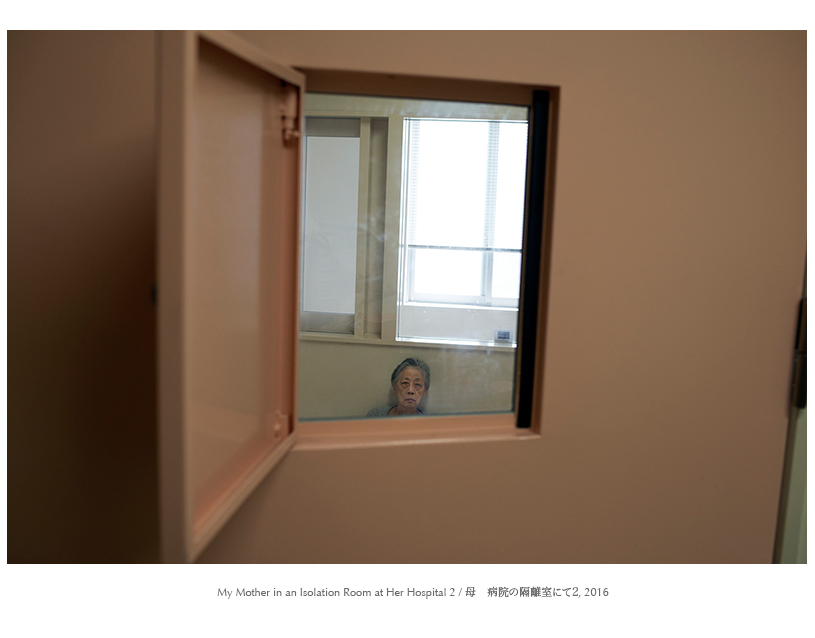
While Leaves Are Falling is a powerful, moving exploration of family, loss, memory, time, and mental illness. Kaneyama reveals, through his stirring, evocative images of his mother and aunties in their most intimate and exposed moments, how a family can come together and evolve in the face of the anguish and frustrations that tragedies can bring. These are photographs that are not only immensely personal, cathartic, and moving, but are also candid and incredibly courageous. In these images of Kaneyama and his family grappling with and, at times, overcoming the effects of loss and mental illness, we come to see how it is in the most vulnerable moments that families are shaken, transformed, and – ultimately – united.


